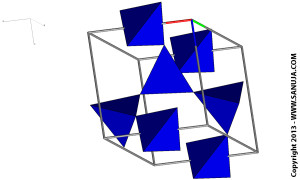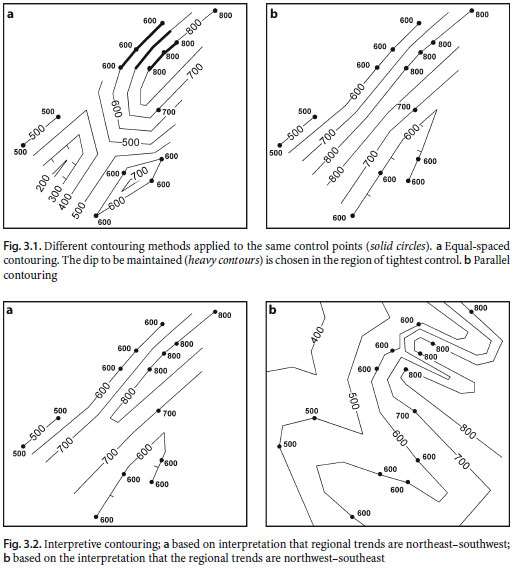If your ideas are not popular among your peers, it can be difficult to get your message across. Even if your points are valid and beneficial others, you may still have trouble convincing people around you. This occurs in almost all environments from home, school, office to in informal events.
Monthly Archives: June 2013
Tips for portable computer users
During the last decade, the portable computers have replaced most of the the desktop computers. Today some people use portable units like laptops or tablets as their primary computer. If you use these portable devices as your primary units, you should also take precautions to protect your privacy and data security. This is not a how to tutorial. This article is written for those who have no idea on where to start. I may improve some of the explanations over time.
Setup
In order to protect your data, create an administrative account with a very strong password. Your password should be at least eight characters long and should include numeric characters. In addition I recommend using capital and simple letters. But what if you don’t want to enter a long password each and every time you want to log in? The solution to this is to create a secondary account with “limited” privileges. You can use a weaker password for this account because this account will not have the permission requirements for modifications. The administrative account password will be needed every time you want to install (or uninstall) a program. While it will not provide ultimate protection for your personal data, at least it is a good compromise for busy individuals.
Hardcare
Caring for portable hardware similar to caring for desktop hardware. You to keep the electronics clean and in controlled environmental conditions. Both of these are harder to do with portable devices.
Dust
Compressed Gas Duster (oxygen can, air can, etc) is the best way to clean dust on hard to reach area. But dusting off also helps by removing debris around fans and vents intakes. If you decide to use the compressed gas to clean, make sure…
- not to spry an area over a long period (will form water vapor)
- not to spry directly into connectors causing the connectors to get lose due to the force of air
Temperature
In countries like Canada where we have a very wide range in temperature, it is difficult to keep the portable devices at ideal conditions. Another problem you will run into is that with our busy lives we take the technology for granted a smallest malfunction due to these environmental elements could bring a catastrophe.
The best practices in controlling temperatures can be easily placed in a list.
- Do not close your laptop (specially MacBook Pro) right after a long use. The head from the internal parts could damage the screen.
- Place your electronic devices in protective casings whenever you can. For example, a laptop can be placed in temperature controlled sleeves.
- The mobile phone/PDAs are most likely exposed to environmental elements because we cannot place them in enclosed cases (what’s the point of having a mobile communication device if it not quickly accessible?.
Liquids
The best solution for this is not to spill anything around your electronics. The measures taken after any liquid damage is not always productive. Almost all liquids we use in our household are electrically conductive and have the ability to increase the process of oxidation of metals.
Repairs
Some of you may be surprised to hear you may be able to repair some mobile devices at home. While most electronics circuity use machines, some parts are made with easy repair in mind. The most common portable device accidents are caused by gravity. To be more specific physical damage to a component caused by a fall.
Screen
Mobile smart phones made by Samsung have screen glued together using a heat sensitive material. Therefore you can remove the damaged screen by applying heat around the plastic front frame. You need to get proper tools which can be brought online. It is very cheap to repair at home than to actually send it out if the unit is not under warranty. So do your research and you might save some money.
Battery
While not all units have removable batteries, most of them have a method to open the battery compartment. This is because battery failures are one of the most common problems in portable electronics. Usually the power supply and the battery is fitted with removable plates. You may require a special tool to open it (such as special screws). I found hobby shops have variety of specialized tools that works for computers.
Power Supply
You cannot replace the power supplies without breaking them on any of the portable devices I know. However, you may want to do more research into your particular model.
RAM
This is the easiest part to replace or upgrade in most computers. Exception to some Netbooks and Ultrabooks, most laptops come with an access window for Random Access Memory (RAM) cards. Check the manual or the model number of the motherboard and verify the maximum amount of RAM it can take. In addition make sure you choose the right type of RAM (DDR2, DDR3, SO-DIMM, etc).
Tips for Emigration from Asia
Traveling outside the country is not something that most people in Asia would do. But with the growth of middle class, the interest in permanently relocating to developed countries have increased significantly. While some may argue that “when in Rome, do as the Romans do” is not always applied in countries like Canada. But if you are not willing to be flexible in your new adopted country, you will find it difficult to live. In 2012, majority of immigrants to Canada identified their motherland as Asia (including South Asia).
Silicate Mineral Structures
Click on the image for larger high resolution file.
Dark blue is Silicate Tetrahedra, green is bonds and the light blue is sodium.

The isolated tetrahedra is a group of silicates in which the crystal structures have no shared oxygen between them. Therefore minerals like Olivine and Garnet are held together by the attaraction force between silica tetrahedra and the surrounding cat ions. This is the least polymerized type.
Structure contouring
The structure contours are very important for understanding geologic features. They are used to demonstrate three denominational models using one denominational paper. More often the structure contouring techniques are often used to widen our understanding of sub-surface geology, but it is also equally useful in mapping non-penetrative geological features.
General Procedure
- Look for intersections between the geologic feature(s) of interest and elevation contours on the map.
- Plot as many points of intersect as possible. Higher the number of points, better accuracy for the structure contours.
- Determine the appropriate contour interval.
- Interpolate the plotted locations by connecting them using a logical process. The quantity of intersection points will directly impact the accuracy of the lines.
I usually start my structure contour lines from a location that either has a lot of intersection points or a location with the most highest geologic complexity. Be careful not to make an error in tight areas because often mistakes can go unnoticed in complex regions.
Rules of Contours
Geologists are famous for making assumptions on the fly. The assumptions we make always have some underlying set of rules. Otherwise Geology would not be a science, but an art. Let’s look at the rules we follow…(1)
- Every contour must pass between points of higher and lower elevation. In other terms, a contour line should only pass through points of intersection in equal elevation.
- Contour lines should not merge or cross except where the surface is vertical or is repeated due to overturned folding or reverse faulting. The lower set of repeated contours should be dashed.
- Contour lines should either close within the map area or be truncated by the edge of the map or by a fault. Closed depressions are indicated by hash marks (tic marks)on the low side of the inner bounding contour.
- Contour lines are repeated to indicate reversals in the slope direction. Rarely will a contour ever fall exactly on the crest or trough of a structure.
- Faults cause breaks in a continuous map surface. Normal separation faults cause gaps in the contoured horizon, reverse separation faults cause overlapping contoursand vertical faults cause linear discontinuities in elevation. Where beds are repeated by reverse faulting, it will usually be clearer to prepare separate maps for the hangingwall and footwall.
- The map should honor the trend or trends present in the area. Crestal traces, trough traces, fold hinges and inflection lines usually form straight lines or smooth curvesas appropriate for the structural style.
Errors in Contours
There is a great deal of interpretation and judgement involved in when deciding on where the lines should go on the map. Even with advanced algorithms used for sanitation of data in geological software, there is always a possibility for errors. The ambiguity of data could lead to different structural styles in contouring.
References
1. 3D Structural Geology; A Piratical Guide to Quantitative Surface and Subsurface Map Interpretation SE; Groshong, Jr., 2006


